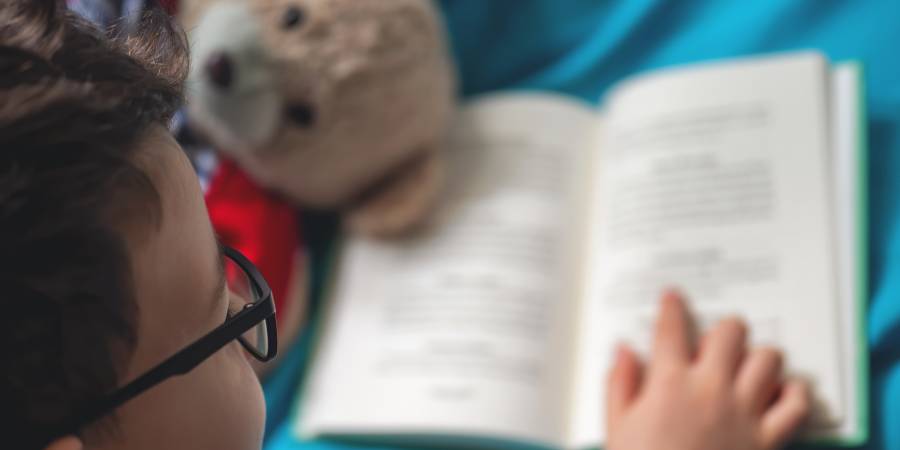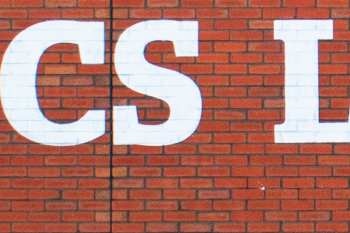Do Books Have Age Ratings?

Almost all types of media we consume get categorized based on age ratings. From movies to YouTube videos, you can’t escape that little label placed on the corner of every poster and thumbnail that informs you regarding the audience that piece of content is created for. However, when it comes to books, one of the mediums that impacts our worldview the most, no such system seems to be set in place.
Books don’t generally have age ratings. While you can occasionally find some titles that indicate a suggested reading age, there’s no unified system categorizing books based on their audience. There are outside sources, like Common Sense Media, that give these kinds of ratings for books, though.
Generally speaking, the titles that come equipped with a suggested reading age are usually aimed at children, meaning that after a reader reaches their teens, there’s no way to confirm whether a literary piece is age-appropriate or not. In the following sections, I’ll take you through everything there is to know about books’ age ratings, including why there still isn’t a system in place, whether setting one up is necessary, and much more.
Why Don’t Books Have Age Ratings?
Given that we’re living in the digital age with all of the world’s knowledge at our fingertips, it might seem unusual that there’s still not a single system that readers can use to determine whether a book is age-appropriate or not. However, as these mediums seem to multiply by the hour, it gets increasingly harder to categorize them based on any other quality other than genre. This happens due to a multitude of reasons.
Reasons why books don’t have age ratings include the sheer volume of literature pieces around the world, lack of demand, fear of censorship, and many other practical and logistical hurdles that make setting up a book rating system an unprofitable investment.
There Are Too Many Books
First and foremost, setting up a categorization system in which we can include all of the world’s literature is an expensive investment (to say the least), an investment that no industry has the interest to take on, as it doesn’t promise any significant financial benefits.
Even if we rule existing books out of the equation, you can imagine how effort and fund-consuming creating a system able to categorize up to 1,000,000 new pieces a year could be.
It Makes No Financial Sense
Let’s say setting up an age rating system isn’t necessarily an impossible feat given the technology and knowledge we have today. The fact of the matter is there just isn’t enough demand for the investment to be deemed worth it.
The genre that would profit the most from this initiative would be children’s literature, and most books that fit within this category voluntarily choose to disclose their age ratings right on the cover.
In short, creating an age rating system for books would be a costly investment that would hardly affect sales, rendering the whole operation unprofitable. No wonder there’s no industry or company trying to make this happen.
Our current movie rating system didn’t magically appear. Production agencies actively worked and invested in its formation because they found that viewers demanded to know more about the nature of a piece before going into the theater. No such phenomenon has been witnessed with books.
Fear of Censorship
Another crucial reason why investors have steered away from this undertaking is that books are protected by the first amendment, and limiting their readability might be considered a form of censorship. This means that setting up a book age rating system wouldn’t just be insanely expensive and highly impractical, but chances are it would lead to serious legal consequences as well.
Books Aren’t As Visually Suggestive As Movies
Additionally, you can argue that the written word doesn’t imprint itself in your memory the same way visual media might. For example, reading about a brutal violent scene is one thing and seeing it in action is another. Following the same logic, reading about an intimate scene between two adults isn’t the same as being exposed to their naked bodies.
However, this can sometimes be considered a controversial topic as some skeptics see no difference between the two scenarios.
There’s No Existing Structure That Can Serve as a Basis of Comparison
Returning to a previous point, even if logistically we could pull off the creation of an age rating system for books, its practicality would be questionable at best. Say publishers start rating their books as they print them out; what would they base their rating system on?
Given that there’s no existing structure, what would a piece of literature be compared to in order to establish its rating? Creating a rating system is a whole investment in itself, making the entire affair that much more expensive and unfeasible.
The Industry Often Shifts Responsibility to Parents
Whenever the topic of an age rating for books comes up, it becomes increasingly clear that publishing companies believe it’s a parent’s job to monitor the types of media their child consumes. They argue that children are much less likely to be unwillingly exposed to books than movies, which is why being able to filter out the inappropriate content doesn’t have to be too time-consuming.
However, proofreading everything your child gets their hands on is an impossible task and one you shouldn’t be burdened with. Luckily, what the industry gets right is that there are some ways you can filter out content you don’t want your child to be exposed to without having to spend copious amounts of time and effort.
There Are Still Ways To Check Whether a Book Is Age-Appropriate
Having said all this, parents looking to find the best new title for their children shouldn’t always have to do so blindly. Researching a book first in reputable review sites could help you differentiate between themes and reading levels much better.
Even when it comes to review sites, there’s rarely a category pertaining to age ratings. However, you can always try to gauge a book’s readability through its ratings on the questionable material depicted in its chapters. This material could include:
- Profanity
- Crude humor
- Violence
- Nudity
- Drug use
- Sex scenes
If you don’t want to have to scroll through hundreds of reviews just to find the information you need, the good news is that there are some smaller-scale systems that rate books according to age. Common Sense Media is one of the go-to platforms for parents trying to quickly gauge whether a particular type of media content is appropriate for their children or not.
Should Books Have Age Ratings?
Covering the topic of why books don’t have age ratings is relatively easy. Diving into the debate of whether they should, on the other hand, can be a bit more complicated. There’s no one-size-fits-all answer when it comes to this question, as there’s a wide range of variables that can affect it within a given context. However, I’ll try to sum up the general consensus as best as I can.
Books shouldn’t have age ratings in most cases. Given the logistical, practical, and legal issues that an age rating system for books brings about, there’s not much value to the system existing in the first place. However, content consumed by children and teens should be better regulated.
Theoretically speaking, an age rating system for books would be an excellent idea. Just imagine how much easier it would become for parents and caregivers to find age-appropriate literature for their children without having to scroll through endless forums and reviews online.
However, in reality, the issue is much more complex than that. First of all, there’s a legal reason why books can’t be categorized by age group. As mentioned, the regulation of literature based on ratings is a highly opposed concept within anti-censorship circles.
Labeling books based on an arbitrary structure will discourage certain demographics from choosing them as a medium, which could be considered a violation of the First Amendment, which includes all literary work.
However, when it comes to impressionable children and teens, the solution isn’t as cut-and-dry as the law makes it out to be. Book publishing lacks order and regulation as is, which is why a lot of potentially offensive or inappropriate work can pass through the system’s inadequate filters.
For this reason, the genres catered to this demographic should be more closely monitored than the rest of the literature. However, this won’t be able to happen until a third party takes on the investment of creating a system that categorizes and rates books without crossing the line of what can be considered censorship.
Therefore, if this is something you’d be interested in, taking action is the only way to make it happen. If companies aren’t aware that there’s a demand for this type of system, they’ll have no financial incentive to go through with it. Make your thoughts known and try to start an open and constant line of communication with parties that could push your vision forward.
How To Check if a Book Is Age-Appropriate for Children
I know that the make-your-thought-known approach might take some time before it evolves into real action. Therefore, in the meantime, I’ll equip you with some tips that allow you to quickly check whether a certain book is age-appropriate for children.
Look for an Age Bracket
While not very common in teen literature, age brackets are often stated in books made for children. Usually, the recommendation is based upon reading level, which you’ll often find printed on the back cover of the book. If you find such a recommendation, your job from there on is easy. Just look for an option that fits your child’s age range, and you’ll be good to go.
Ask for Recommendations From Loved Ones
The downfall of rating websites is their subjectiveness. You don’t know the basis or structure of their scoring system, and what’s more, you don’t know whether they share the same emotional and moral values as you. What a reviewer might find inappropriate you may consider okay and vice-versa.
Therefore, your best bet would be to search for more personalized reviews by family and friends. Given that these are the closest people in your life, chances are they share a much more similar worldview with you than a stranger on the internet. For these reasons, their recommendations might be the closest thing you have to proofreading a book yourself.
Do Some Research
When your loved ones aren’t well-versed enough to give you a recommendation, you’ll have to lean on your research skills. Look up the book, reviews, and the author themselves, as their previous work can reveal a lot about their general writing style.
If you’re researching a children’s book, you’re in luck, as there’s no shortage of sites and parenting forums dedicated to making sure you’re able to find the right type of literature for your little ones.
However, when it comes to teen literature, the process becomes a bit more challenging. The lines of what’s appropriate and what’s not start to get blurrier, which is why more extensive research would be required in this case.
Teach Your Child the “PICK” Technique
You can research a book all you want, but without reading it cover to cover, you’ll never be 100% sure regarding its content. For this reason, teaching your child to be critical of the material they take in can be the most efficient way to ensure the information they’re consuming is valuable. Not to mention that by doing so, you’ll be encouraging critical thinking from a young age.
Here’s what the PICK technique entails:
- P-Purpose. Why am I reading this book?
- I-Interest. Do I enjoy reading this book?
- C- Comprehend. Can I understand what the story is about?
- K-Know. Am I familiar with most words in this book?
When reading a piece of literature, your child will start analyzing the content better to check whether it fits the previously-set standards. This will encourage them to be more mindful of the information they’re consuming and become more critical regarding what they read, both qualities that can be immensely helpful in many real-world scenarios.
Conclusion
Most books don’t have age ratings due to logistical, practical, and legal issues. As it stands, the volume of books being published worldwide makes creating a unified rating system a near-impossible feat that requires excessive investments that can’t be sustained by today’s demand.
Luckily, there’s no shortage of options for parents looking to monitor their children’s media consumption. From recommendations by loved ones to thorough research, the approaches you can use to ensure a book is age-appropriate are endless.






